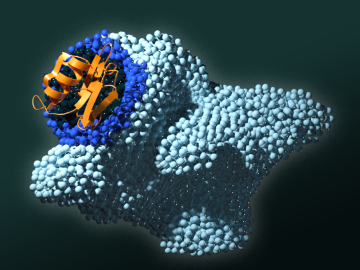Filter News
Area of Research
- (-) Biology and Environment (42)
- Advanced Manufacturing (14)
- Biological Systems (15)
- Biology and Soft Matter (1)
- Building Technologies (3)
- Chemistry and Physics at Interfaces (4)
- Clean Energy (187)
- Climate and Environmental Systems (2)
- Computational Biology (4)
- Computational Engineering (2)
- Computer Science (6)
- Electricity and Smart Grid (1)
- Energy Frontier Research Centers (7)
- Energy Sciences (3)
- Fossil Energy (2)
- Fuel Cycle Science and Technology (1)
- Functional Materials for Energy (8)
- Fusion and Fission (19)
- Fusion Energy (2)
- Geographic Information Science and Technology (2)
- Isotope Development and Production (1)
- Isotopes (10)
- Materials (226)
- Materials Characterization (2)
- Materials for Computing (13)
- Materials Synthesis from Atoms to Systems (5)
- Materials Under Extremes (5)
- National Security (25)
- Neutron Science (80)
- Nuclear Science and Technology (27)
- Nuclear Systems Modeling, Simulation and Validation (1)
- Nuclear Systems Technology (1)
- Quantum Condensed Matter (1)
- Quantum information Science (2)
- Reactor Technology (1)
- Sensors and Controls (1)
- Supercomputing (115)
- Transportation Systems (5)
News Type
News Topics
- 3-D Printing/Advanced Manufacturing (7)
- Advanced Reactors (1)
- Artificial Intelligence (3)
- Big Data (1)
- Bioenergy (9)
- Biology (18)
- Biomedical (5)
- Biotechnology (5)
- Buildings (2)
- Chemical Sciences (8)
- Climate Change (7)
- Composites (3)
- Computer Science (5)
- Coronavirus (7)
- Critical Materials (1)
- Cybersecurity (1)
- Decarbonization (2)
- Energy Storage (5)
- Environment (15)
- Fusion (1)
- Grid (1)
- High-Performance Computing (5)
- Isotopes (2)
- Machine Learning (2)
- Materials (10)
- Materials Science (4)
- Microscopy (3)
- Molten Salt (1)
- Nanotechnology (5)
- National Security (1)
- Net Zero (1)
- Neutron Science (3)
- Nuclear Energy (1)
- Partnerships (5)
- Physics (1)
- Polymers (1)
- Security (1)
- Simulation (4)
- Summit (3)
- Sustainable Energy (4)
- Transformational Challenge Reactor (1)
- Transportation (2)
Media Contacts

A team of scientists led by the Department of Energy’s Oak Ridge National Laboratory designed a molecule that disrupts the infection mechanism of the SARS-CoV-2 coronavirus and could be used to develop new treatments for COVID-19 and other viral diseases.

Oak Ridge National Laboratory scientists set out to address one of the biggest uncertainties about how carbon-rich permafrost will respond to gradual sinking of the land surface as temperatures rise.

A quest to understand how Sphagnum mosses facilitate the storage of vast amounts of carbon in peatlands led scientists to a surprising discovery: the plants have sex-based differences that appear to impact the carbon-storing process.

Three scientists from the Department of Energy’s Oak Ridge National Laboratory have been elected fellows of the American Association for the Advancement of Science, or AAAS.

As part of a multi-institutional research project, scientists at ORNL leveraged their computational systems biology expertise and the largest, most diverse set of health data to date to explore the genetic basis of varicose veins.

Seven scientists at the Department of Energy’s Oak Ridge National Laboratory have been named Battelle Distinguished Inventors, in recognition of their obtaining 14 or more patents during their careers at the lab.

Eight ORNL scientists are among the world’s most highly cited researchers, according to a bibliometric analysis conducted by the scientific publication analytics firm Clarivate.

When Hurricane Maria battered Puerto Rico in 2017, winds snapped trees and destroyed homes, while heavy rains transformed streets into rivers. But after the storm passed, the human toll continued to grow as residents struggled without electricity for months. Five years later, power outages remain long and frequent.

Five technologies invented by scientists at the Department of Energy’s Oak Ridge National Laboratory have been selected for targeted investment through ORNL’s Technology Innovation Program.

Researchers at ORNL have definitively linked the function of a specific domain of proteins important in plant-microbe biology to a cancer trigger in humans, knowledge that had eluded scientists for decades.




